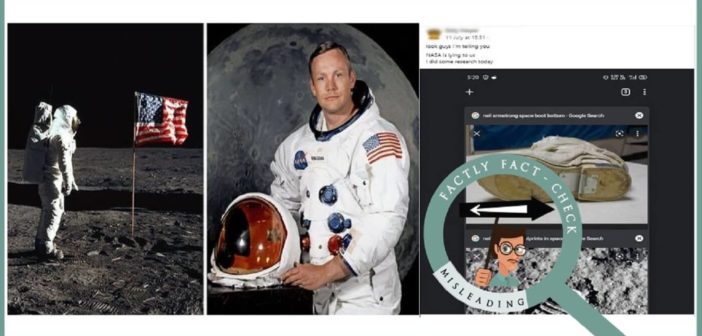A collage is being shared on social media claiming that the sole of Neil Armstrong’s space boots does not match with the photo of boot prints left on the moon during NASA’s Apollo 11 Mission. Sharing these pictures, this post claims that the lunar landing must have been faked by NASA. Let’s verify the claim made in the post.
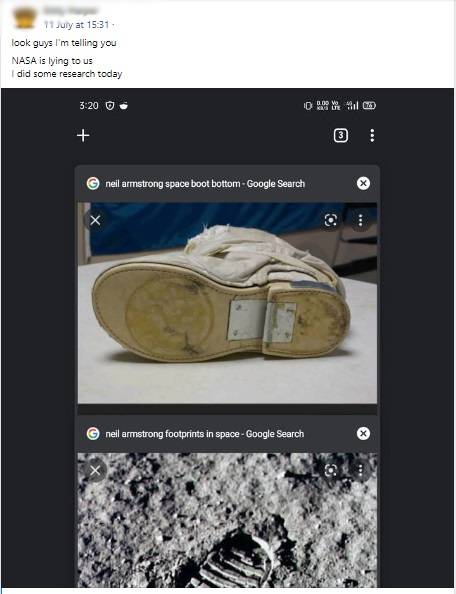
Claim: The sole of Neil Armstrong’s spacesuit boots does not match the photo of the boot print left on the moon.
Fact: During NASA’s Apollo 11 Mission, both Neil Armstrong and Buzz Aldrin wore lunar overshoes over their spacesuit boots before stepping out on the surface of the moon. The sole of Neil Armstrong’s lunar overshoes matches the boot prints left on the moon during NASA’s Apollo 11 Mission. The post compares the pictures of the sole of a spacesuit boot and the boot prints of the lunar overshoes and misleads people that NASA had faked the landing on moon. Hence, the claim made in the post is MISLEADING.
Image 1:
On reverse image search of the image shared in the post, the same photo was found in an article published by the ‘heroiclerics.org’ website. This article reported it as a picture of the thermo-micrometeoroid garmented boot (TMC) used in the Apollo A6-L suit, which predated the A7L/A7LB suit actually worn on the Apollo missions. This boot photo was reportedly captured on 19 January 2012 at the U. S. Rocket and Space Center in Huntsville, Alabama, the United States. We could not find any other reliable information regarding this photo.
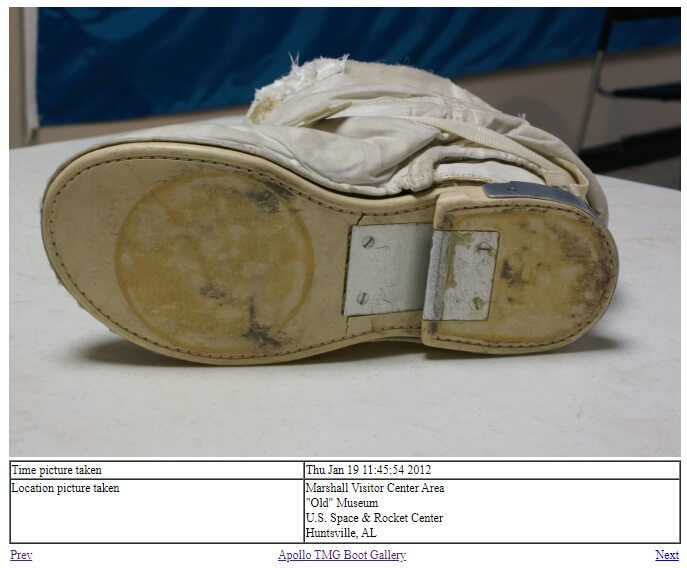
When we searched to find the details of the spacesuit boots used by Neil Armstrong during NASA’s Apollo 11 Mission, we found the pictures of Neil Armstrong’s spacesuit boots in a journal published by NASA. The spacesuit boots used by Neil Armstrong also had a circular mark at the ball of the foot and the mark of the heel corresponded to where the Velcro pads would be affixed. Neil Armstrong’s spacesuit is on display at the National Air and Space Museum in Washington, D.C. Phil Plait, a former astronomer and author, published an article sharing the photos of Neil Armstrong’s spacesuit taken by him at the Smithsonian’s National Air and Space Museum.
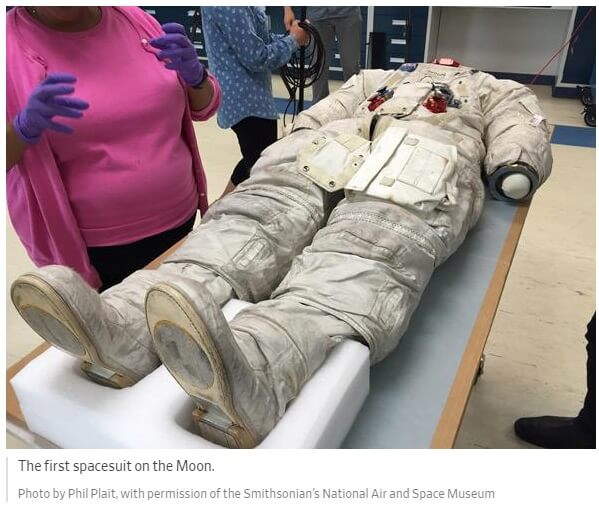
Image 2:
On reverse image search of the photo shared in the post, a similar photo was found published on the NASA website. The description of the photo states, “A close-up view of astronaut Buzz Aldrin’s bootprint in the lunar soil, photographed with the 70mm lunar surface camera during Apollo 11’s sojourn on the moon”. NASA published similar boot print pictures in a journal describing them as the photos taken by Buzz Aldrin.

According to the reports, during NASA’s Apollo 11 Mission, both Neil Armstrong and Buzz Aldrin wore lunar overshoes over their spacesuit boots before stepping on the surface of the moon. The lunar boot was actually an overshoe that the Apollo lunar explorers slipped on over the integral pressure boot of the spacesuit. The lunar overshoes used in the Apollo 11 Mission reportedly had a sole filled with lines, like rungs of a ladder, formed by eight flat, straight-edged ribs. The lunar overshoes used in NASA’s Apollo 17 mission can be seen here. The sole of these lunar overshoes (also called ‘moon boots’) match with the boot prints left on the surface of the moon during NASA’s Apollo 11 mission.
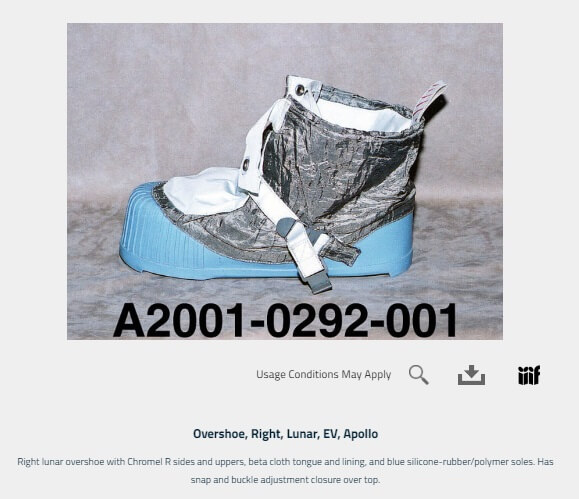
A picture showing spacesuit boots and lunar overshoes of Neil Armstrong can be seen here. A photo showing the lunar overshoe of Buzz Aldrin can be seen here. As per the reports, Armstrong and Buzz Aldrin’s boots were left on the moon when they returned from the 1969 mission. From all these pieces of evidence, it can be concluded that the post is comparing the pictures of a sole of a spacesuit boot and boot prints of lunar overshoes and misleads that NASA had faked the landing on the moon.
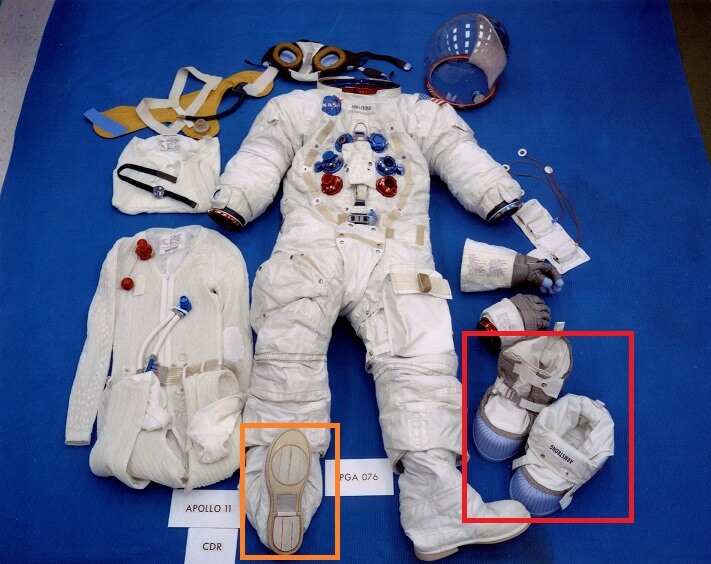
To sum it up, Neil Armstrong’s lunar overshoes sole match the boot prints left on the moon during NASA’s Apollo 11 Mission.


